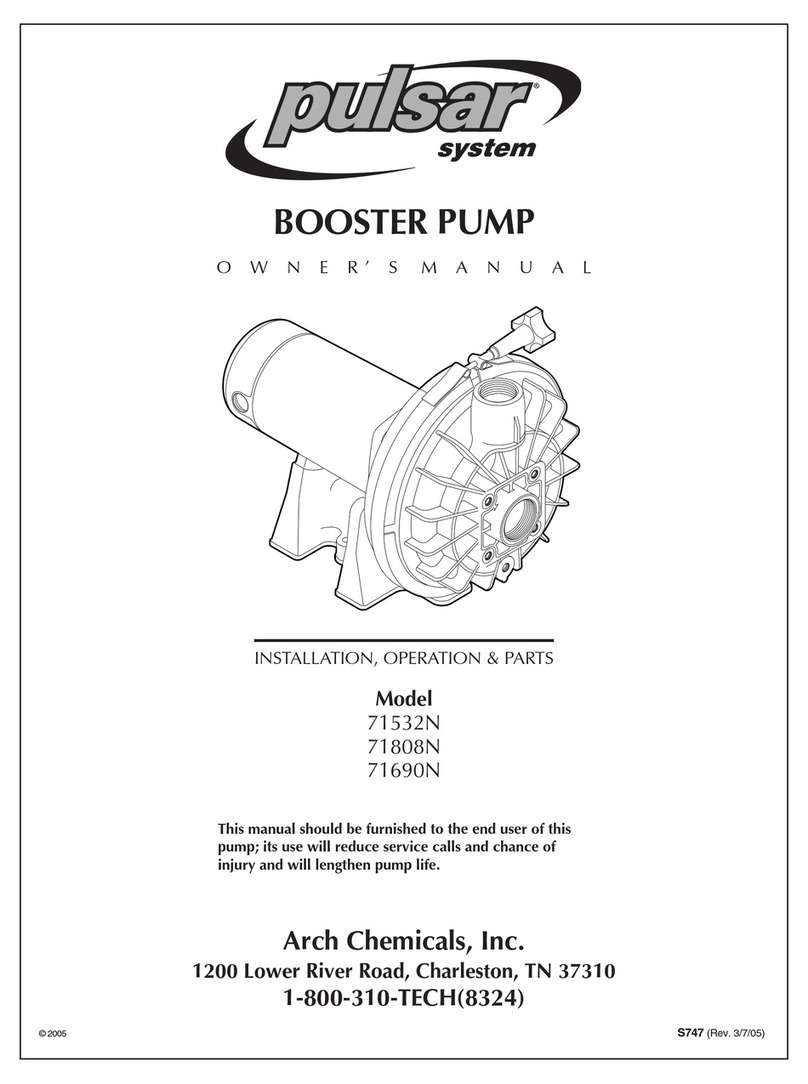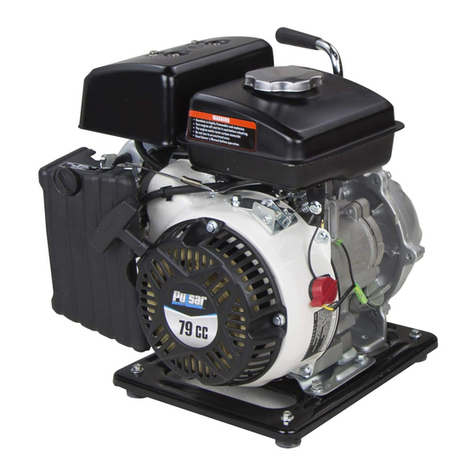
Operating Instructions & Parts Manual
2Inch & 3Inch Water Pump
4
Important Safety Information
Most accidents can be prevented if you follow all instructions in this manual and on the pump. The most common
hazards are discussed below, along with the best way to protect yourself and others.
Warning! The warnings, cautions and instructions discussed in the instruction manual
cannot cover all possible conditions and situations that may occur. It must be understood by the
operator that common sense and caution are factors which cannot be built into this product, but must
be supplied by the operator.
• Read and understand this owner’s manual before operating the pump. Failure to do so could result in
personal injury or equipment damage.
• This pump is designed to pump only water that is not intended for human consumption. Other uses
can result in injury to the operator or damage to the pump and other property. Pumping flammable
liquids, such as gasoline or fuel oils, can result in fire or explosion, causing serious injury. Pumping sea
water, beverages, acids, chemical solutions, or any other liquid that promotes corrosion can damage
the pump.
• Know how to stop the pump quickly, and understand the operation of all controls. Never permit anyone to
operate the pump without proper instructions.
•Do not allow children to operate the pump. Keep children and pets away from the area of operation.
• Dress properly. Do not wear loose clothing or jewelry. Contain long hair. Keep your hair, clothing, and gloves
away from moving parts. Loose clothing, jewelry, long hair can be caught in moving parts.
• Do not operate pump in explosive atmospheres, such as in the presence of flammable liquids, gases, or dust. The
engine creates sparks, which may ignite the dust or fumes.
• Gasoline is extremely flammable, and gasoline vapor can explode. Refuel outdoors, in a well- ventilated area,
with the pump stopped. Never smoke near gasoline, and keep other flames and sparks away. Always store
gasoline in an approved container. If any fuel is spilled, make sure the area is dry before starting the pump.
• The muffler becomes very hot during operation and remains hot for a while after stopping the engine. Be careful
not to touch the muffler while it is hot. Let the engine cool before storing the pump indoors.
• To prevent fire hazards and to provide adequate ventilation for stationary equipment applications, keep the
pump at least 3 feet away from building walls and other equipment during operation. Do not place flammable
objects close to the pump.
• Exhaust gas contains poisonous carbon monoxide. Avoid inhalation of exhaust gas. Never run the pump in a
closed garage or confined area.
• Do not overload the pump. Use the correct pump for your application. The correct pump will do the job better
and safer at the rate for which it is designed.
Save This Manual
You will need this manual for the safety warning and precautions, operating, inspection, maintenance
and cleaning procedures, parts list and assembly diagrams. Keep your receipt. Keep this manual in a safe
and dry place for future reference.





























